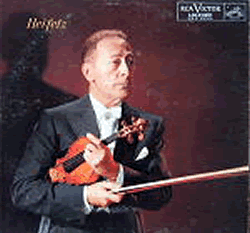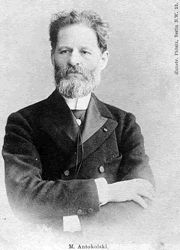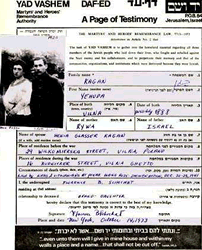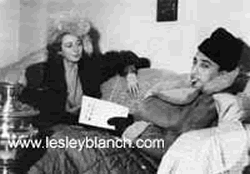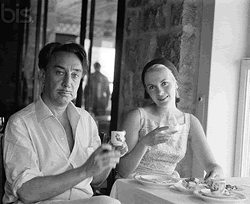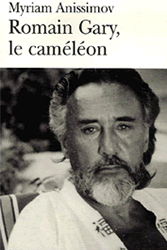#vilna_born-1:
Rav Alexander
Moshe Lapidus ZT"L
The Forgotten Gadol:A First-Time Comprehensive Biography
By Shlomo Engel
http://www.tzemachdovid.org/Musar/ravlapidus.html.
It is doubtful whether, among the thousands of bnei Torah (sons of the
Torah) in the world today, there are several hundred that have heard
of Rav Alexander Moshe Lapidus zt"l, one of the greatest gaonim
and tzadikim of his time in Lithuania and Russia, and author of the
mussar classic Divrei Emmes. Although very famous and active on the
Jewish scene in the latter part of the nineteenth century, in our times
he has been all but forgotten by non-historians. The following article
is the first comprehensive biography of this man.. In it, we attempt,
based on all the resources available to us at present, to present an
account of the life history and achievements of this gadol, if only
to perpetuate his memory in our times.
He was born in 5579 - 1819 in Vilna. His father, Rav Tzvi Lapidus, was
a wealthy man, famous in Vilna as a talmid chacham and a tzaddik. His
parents were known as the foremost machnisei orach (welcoming of guests)
of Vilna. Rav Alexander Moshe would often say that his extraordinary
arichus yomim was due to the zechus of his great father.
In his youth, Alexander Moshe showed amazing mental capabilities, and
it was obvious to all that knew him that he was destined to be one of
the gedolei hador. He was an outstanding illuy and masmid, and it was
not long before his fame spread as the "Vilna illuy". Rav
Abbele, the famed av bais din of Vilna, cherished this young boy very
much for his advanced greatness in Torah although he was only ten years
old. Even at this young age, he once wrote a kushya to the gadol hador,
Rav Akiva Eiger. His childhood friend at that time in Vilna was Rav
Shlomo HaKohen, who later became the famous dayan of Vilna and author
of the Cheshek Shlomo. At the age of nine he learned with a friend Rav
Shlomo Lubatcher, later a dayan in Vilna.
At the age of twelve he was engaged to, and at thirteen married, Yenta,
the only daughter of Reb Shimon Shushitzky, one of the wealthiest men
of Yanova, a suburb of Kovna. She bore him three daughters. His father-in-law
took upon himself to support this young gaon in order to facilitate
his continued uninterrupted learning.
When he was fourteen years old he traveled to Salant to learn under
Rav Tzvi Hirsh Braude, the rav of Salant. Rav Tzvi Hirsh was one of
the greatest gaonim in the generation of Rav Akiva Eiger, and his famous
yeshiva attracted the finest of talmidim. Many young men flocked to
his yeshiva, among them many future rabbanim and gedolim, including
Rav Yisrael Salanter and Rav Elya Levinson of Carting.
At the time that Rav Alexander Moshe was learning in Salant, Rav Yisrael
Salanter was a maggid shiur teaching talmidim Seder Nezikin. Rav Alexander
Moshe later recalled his rebbe asking him to go to the siyum that Rav
Yisrael made upon completing Seder Nezikin, and to repeat to him the
"hadran" Rav Yisrael had said there. Their acquaintance in
the Yeshiva of Salant was the beginning of a lifetime friendship between
these two gedolim, as we shall see.
Throughout his life, he held a number of positions of rav, starting
at the tender age of seventeen, when he was invited to become the rav
of Yanova, his wife's hometown. Later, he became the rav of a town (Ferstadt?)
across the river from Horodna. Finally, in 5626 - 1866 he was nominated
rav of the city of Rassein, a position he held for forty years until
his petirah. On his matzeivah is noted that he served in the Rabbanus
for seventy years.
His second wife was Gruna, the daughter of Rav Yaakov Bendetman, who
was the rav of Boisk and author of the sefer Zichron Ya'akov. She bore
her husband a son, Shmuel, of Baku, and three daughters. Unfortunately,
she passed away at the untimely age of thirty-six.
In an obituary to this illustrious rebbetzin that appeared in Halevanon
(Paris 1870 - Vol. 7 No. 27), we can learn some of her greatness. She
was a great tzadekes, famous for her chessed and her histapkus, never
complaining about the poor financial state of her home. She was also
a highly intelligent woman, fluent in Tanach and in Lashon Hakodesh,
as well as in German and general literature. Consequently, she would
sometimes get into discussions with irreligious maskilim in areas of
emunah, and successfully debated them.
To demonstrate her advancement in Tanach, the writer of the obituary
brings an original vort on Chumash from this great rebbetzin. The passuk
says in Tehillim in describing the makkah of tz'farde'a, "Sharatz
artzom tz'fard'im b'chadrei malcheyhem (Their land sprouted forth frogs
in the rooms of their kings)." Why does the passuk say "their
kings" in the plural sense; Mitzrayim had only one king? She answered
as follows: The Midrash says that during makkas b'choros even pictures
or statues of b'chorim who were long dead fell to the ground and were
destroyed. The reason for this was to show that the makkah was not a
natural phenomena but a punishment sent from Hashem. In the same way,
there were kings of Mitzrayim who had died long ago and were mummified.
These mummies were kept in special sealed rooms, which are referred
to here as "the rooms of their kings". During the makkah of
tz'farde'a, not only did the frogs enter the rooms of the live people,
they also filled the sealed rooms of the dead mummies.
After the petirah of his second wife, Rav Alexander Moshe married Mina,
the daughter of Rav Chaim Yehudah Leib Tiktinsky, rav of Mir.
From the time of his youth, Rav Alexander Moshe was famous as a genius
in Torah. He was a gadol in Shas and poskim and a great mechadesh. His
chiddushim were outstanding, both in their pilpul and their yashrus.
He was also one of the foremost poskim of his generation. Shailos were
sent to him from all corners of the Jewish world, thus writing throughout
his life countless teshuvos in all areas of Torah. He was very quick-thinking
and answered every shailah immediately. At the time of his petirah it
was reported that a collection of teshuvos was ready to be printed,
but for unknown reasons this never materialized. The only teshuvos that
have come down to us are those that were printed in others' seforim,
as well as those that appeared in the many Torah journals of the time:
Hatvunah, Yagdil Torah, Torah Mitzion, K'vod Halevanon, etc. In more
recent times, a number of his teshuvos was collected and published by
Rav Pinchos Lipschutz (editor of Yated Ne'eman) in a sefer entitled
Ikvei Brachah (Yerushalayim 1984). I have been informed that, to date,
some extensive work is being done to collect all accessible teshuvos,
drashos and ma'amarim of Rav Alexander Moshe to be published in an upcoming
sefer.
From that small amount of teshuvos we can get some idea of his amazing
gadlus baTorah: his broad knowledge, his sharpness and his originality.
We see depth and precision in his unique style of writing. He wrote
in a concise - perhaps shorthand - form, testifying to a unique ability
to capture broad ideas into few words. This was a talent he was known
for: When studying under Rav Tzvi Hirsh Braude, his rebbe would give
him the task of recording the essences of his long pilpulim. Although
there were a number of very great talmidim studying under him, it was
only Rav Alexander Moshe whom he trusted to summarize his conclusions
and yesodos in synopsis.
A talmid recalls that for this reason, Rav Alexander Moshe was very
careful when choosing a chavrusa to find only one who was able to understand
his concise remarks, since he appreciated very much when his talmidim
understood his allusions.
He had an outstanding ability to grasp large amounts of Torah in very
little time. He confided to a talmid that when he was thirteen years
old he learned the entire Masechta Yoma with Tosafos and Maharsha on
Yom Kippur for his first time, and knew it very well.
When visiting Vilna one time, one of the dayanim of Vilna came to visit
him with a large kuntras that he had completed, and requested of him
to go through the work. He left the kuntras on the table and left the
house. After walking a few hundred steps he realized that he had left
his handkerchief in that house, and returned to retrieve it. Upon entering
his room, Rav Alexander Moshe told him that he may have his kuntras
back. The dayan did not understand: "Didn't I ask the Rav to look
at it?" "Indeed you did," replied Rav Alexander Moshe,
"and I have done that already." The dayan looked at the kuntras,
and to his astonishment even found comments in the margins he had added.
..Aside for his collection of teshuvos that was never published, he
left over many other seforim in manuscript form on Shas, Tanach and
Drush, as well as kuntreisim addressing various issues of his times,
all of which have been lost. What is left, in an organized form, are
some of his chiddushim that were published in his lifetime by Rav Yitzchok
Maltzan in the sefer Avnei Zikaron (Warsaw 1896), and his classic mussar
sefer Divrei Emmes.
The latter was written at the age of eighty as a tzava'ah to his children,
and was first published anonymously in Vilna in 5670 - 1910. Subsequently
(when it was reprinted for the fourth time in 1966), it was publicized
that its author was non other than the gaon Rav Alexander Moshe Lapidus.
It is a first-rate mussar classic, powerfully compelling man never to
forget the burning truth about his existence in this world, to make
a cheshbon hanefesh and to serve his Master. When the sefer first appeared
it was quickly grabbed up by all lovers of Torah and mussar. A number
of gedolim of the time said clearly that it is worthy to be considered
alongside the sifrei mussar of the Rishonim. Rav Baruch Ber Leibowitz
told the publisher that he was very nispa'el from the sefer It has since
has been reprinted a number of times and has become a classic in all
yeshivos where mussar is studied. When it was reprinted for the fourth
time in Eretz Yisrael (1966), it received very warm letters of haskamah
from Rav Avraham Yoffen and the Steipler z"l.
Rav Alexander Moshe himself was a personification of mussar ideals.
In all his dealings, in his personal life and when acting on behalf
of the Klal, he was an example of fairness and justice, never getting
bought by glory or money. He was described everywhere as an ish emmes,
always in search of the emmes, always voicing the truth wherever it
had to be heard.
When he met his wife as a kallah, he told her, "People say that
I know how to learn, but they are exaggerating. I know much less than
they think. People say that I am a yerei Shamayim, but this is also
exaggerated. People that say that I am an anav are obviously not aware
what a haughty person I am." His kallah heard these words and exclaimed,
"It is inconceivable that there is not one good quality that you
have." He replied, "Indeed, there is one good thing that can
be said about me - I am a man of emmes. You should therefore know that
everything I just told you is absolutely true!"
This unwavering commitment to emmes was evident in his personal policies
regarding s'micha and hamlatzos, as a talmid recalls: It was known that
he only gave semicha to someone who stayed with him for some years and
got familiar with and was very well versed in hora'ah, and even then
only if that person had semicha from another great rav. He was also
very careful not to write a letter of recommendation for someone that
he did not know personally, as he did not want to write false praises
about the unworthy. He did not approve of those rabbanim who would exaggerate
and embellish the ma'alos of an individual in recommending them. He
would never recommend a candidate for rabbanus in any city. Only when
asked about someone that he knew well and felt was fit for the post
would he recommend him, and actively support his candidacy for the rabbanus.
In his eyes, anything less than that would compromise k'vod haTorah
and could also result in chillul Hashem.
At the end of his tzava'ah (Divrei Emmes) he writes the following: "I
ask and command the eulogizers not to overstate my praises. They should
not say praises and titles that I did not have . Only this may they
say about me: the three midos with which Yisrael are distinguished -
rachmanim, beishanim and gomlei chasadim - have clung to me from my
first day of awareness. To take pity on every man in every way possible
- even when I was yet a small child, five or six years old, and my mother
gave me food for cheder, and I saw a poor child who did not have what
to eat and I gave him my portion secretly, and I remained hungry until
I came home. When I ate supper at home and a poor man came, if there
was no one at home I gave him my portion of meat and hot food and I
ate only the bread.
"All my life I was strong to do chessed to people, to close and
far people, monetarily and physically, even with tremendous bothers.
I did not even consider my honor in this; I ignored my own desires before
those of another. I know certainly that in the mitzvah of tzdakah and
gemilus chassadim I fulfilled my obligation, according to my level.
Even in times when I was in financial straits, I made sure to economize
in my own family expenses so that I may be able to perform tz'dakah
and chessed . I rejoiced when I gave tz'dakah and when the hungry ate
at my table. I received guests b'seiver panim yafos, and I praised and
thanked Hashem that I merited to do this which many people do not have
the opportunity to do. When I did not have the means to help the one
in need according to his needs, I tried to help him with whatever I
could, so as not to turn down a poor man, and I appeased him with nice
words and consolance. I also tried to encourage others to give tzdakah
.
"I know that the Beis Din shel Ma'alah will ask me why I transgressed
the words of Chazal: "He who is spending (for mitzvos) shall not
spend more than a fourth (of his estate)", and I will answer them
an answer that they will accept.
"I was always happy with my lot and did not desire more . There
were many occasions that I afflicted myself with fasting and no one
knew about it, and all the day of my fast I was involved only in Torah
and Avodah. . All my life I tried to honor every man in every possible
way, especially yir'ei Hashem and lomdei Torah .
"When I would hear people discussing news or idle talk, in which
there is a great pleasure, and there are many who get entrapped in this
. I would, in order not to get entrapped in this, think to myself, 'Should
I, for the pleasure of hearing news, be m'vateil Torah!?" I would
stop myself and go to learn. I testify for myself that from my first
day of awareness not one day passed me by that I did not spend much
time studying Torah, day and night. I was a masmid, and I dedicated
my Shabbosos and Yomim Tovim to Torah and Avodas Hashem. When my thoughts
led me to be haughty about my Torah or ma'asaim tovim, or when I was
given honor, I controlled myself with ideas that break and humble the
heart, like remembering the day of death, etc. I ran away from glory,
from jealousy and from hate like one runs away from a lion, because
I knew the truth, that they are very dangerous to man. They take him
out of this world and bring him to gehinnom, r"l.
"I tried very much to judge everyone favorably, however possible.
I constantly did various stratagems to merit others [in doing mitzvos],
in every way I was able. I loved shalom and pursued shalom. My witnesses
are in Heaven [to testify] that when I would see people fighting with
each other, and I was unable to make peace among them, I was in great
distress. I also was distressed over the pain of the poor and ill. It
pained me much when I saw breaches in our nation in a number of areas,
where the breached was more than the standing, and the gedolei Yisrael
did not have the ability to repair those breaches, for their words were
not heard .
"I have related to you, my descendants, my conduct in these areas.
I saw fit to engrave them with a pen of iron and lead so that they should
last many days, [in order that] perhaps some man may see [them] and
will do as I did, and that will be a z'chus for my n'shamah. . These
words may be said about me in my hesped, but [the maspidim] should not
exaggerate, and perhaps some man will be aroused to repentance and to
bettering his deeds through this hesped ."
He had strong ties to the ba'alei mussar as well. As a younger friend
of R' Yisrael Salanter, he was influenced strongly by the Mussar movement
which R' Yisrael founded. When opponents of the movement criticized
it, he signed together with R' Yechiel Michel Epstein, author of Aruch
Hashulchan, on the famous proclamation entitled "L'ma'an Ha'emmes"
in defense of the proponents of mussar.
He helped the Alter of Slabodka, Rav Nosson Tzvi Finkel, found the yeshiva
Knesses Yisroel of Slabodka. In fact, Rav Alexander Moshe is credited
as the one who "discovered" the Alter of Slabodka. When the
Alter was yet a young man, he would go periodically to his surrounding
cities to give drashos to the people in mussar and yiras shamayim. One
time, he came for this purpose to his birthplace Rassein. The Rav came
to hear his drasha, and recognized the great potential of the young
speaker. He immediately contacted Rav Simcha Zisel, the Alter of Kelm,
and asked him to devote himself to direct the young man to the ways
of mussar which Rav Yisroel Salanter had taught. The Alter of Kelm was
a foremost mechanech, and after a number of years of learning under
him, Rav Nosson Tzvi became one of the greatest proponents and teachers
of mussar in the world.
Although he was a man of great stature and prestige, it was never beneath
his dignity to help his fellow Jew in whatever manner. While he was
rav in Yanova, there was a rich man in the community who had lost all
his wealth. Terribly ashamed about his sad turnabout, he revealed his
true financial state to no one. He was also too proud to accept any
donations from anyone, and he found himself approaching Pesach without
a clue how he would manage. The first night of Pesach, this man came
home, and out of desperation began davening to Hashem. At that moment,
the door opened, and a man entered heavily wrapped in his thick coat.
He put something on the table and ran out. The poor man opened the package
and found matzah, wine and meat sufficient for that night and the following
day. The second night the man waited for the same thing to happen, and
it did, only this time he was prepared. He grabbed his mysterious benefactor
and did not let him leave until he revealed his identity. It was the
Rav. He had somehow found out about the man's situation, and, not wanting
to shame him, found an unconventional way to help him.
Besides for being a gadol in Torah and mussar, R' Alexander Moshe was
also one of the leaders of his generation. He was a foremost askan,
constantly playing an active role in the affairs of K'lal Yisrael in
Lithuania and Russia. He very often participated actively in various
movements that sprang up from time to time that sought to benefit the
Tzibbur. He was also often invited to participate with other gedolim
at meetings of Rabbanim and to meet different government officials in
St. Petersburg on behalf of Jewish causes.
When Rav Chaim Ozer Grodzensky became a rav in Vilna at a very young
age, he was met by much opposition by influential baalebatim of Vilna
who considered him unfit for the position due to his age. Rav Alexander
Moshe, together with Rav Chaim Soloveitchik, traveled especially to
Vilna and while there visited R' Chaim Ozer, as is customary to act
toward a mara d'asra. Subsequently, all the opposition dissipated.
He was known as a great lover of Eretz Yisroel, and wrote articles in
which he expressed his feelings about settling the land of Eretz Yisroel.
He writes in one article his hope "to make a group of farmers that
will be well-based (financially) in Eretz Yisroel, in the land that
is tied to us through thousands of memories, that was designated to
us by Hashem through his holy nevi'im, and which the mitzvah of settling
it is very great ." At the same time, he expressed his firm belief
that only Torah-observant Jews be allowed to settle there. He also disapproved
of the notion that the newfound accessibility of Eretz Yisrael to the
Jewish people was to be considered Aschalta D'G'ulah.
One of the great achievements which Rav Alexander Moshe will be remembered
for is his role in the founding of the Kollel movement, starting with
the Kollel prushim of Kovna. Rav Yaakov Lipschutz, the secretary of
the Kovna Rov Rav Yitzchak Elchanan Spektor, in his classical history
of Lithuanian/Russian Jewry, relates the chain of events that led to
the founding of this kollel. In 5637 (1877), Rav Leizer Yaakov Chvas
of Yanishok, a noted askan in those times, approached Rav Yaakov Lipschutz
equipped with a letter of encouragement from Rav Alexander Moshe, and
asked him to present his project to Rav Yitzchak Elchanan to gain his
support for it. What was this project?
Rav Leizer Yaakov had connections to a very wealthy bachur, Ovadiah
Lachman of Berlin, and he traveled to Berlin to try to influence Mr.
Lachman to support Torah causes. He made this journey on foot, and after
two months in Berlin succeeded in getting a pledge of 1,000 rubles annually
from Mr. Lachman for chizuk haTorah. With this pledge he traveled to
Rav Yisrael Salanter in Memel and related to him what he had accomplished
in Berlin. After considering the matter, Rav Yisrael decided to utilize
these funds to found a kollel, an institution of learning for a selected
group of young men of high caliber who would dedicate their years to
grow in Torah and yirah, in order to become gedolim and rabbanim of
their generation, and would be supported by these funds.
From there Rav Leizer Yaakov traveled to his friend Rav Alexander Moshe
in Rassein in order to found this institution there. Rav Alexander Moshe,
however, felt that this institution, if it was to have any success,
must be under the auspices of the gadol hador Rav Yitzchak Elchanan
and therefore had to function in Kovna. Hence Rav Leizer Yaakov's appearance
in Kovna.
When the idea was presented to Rav Yitzchak Elchanan, he was skeptical
about accepting this responsibility considering the countless other
Klal obligations he already had. It was suggested that perhaps his son
Rav Tzvi Hirsh Rabinowitz should assist his father in shouldering this
heavy task. Thus was founded the illustrious Kollel Prushim of Kovna,
with Rav Tzvi Hirsh doing all the "ground work", securing
the financial support, selecting the avreichim, etc. to the last detail.
The Kollel became a very great success, where some of the best minds
of Lithuanian Jewry dedicated years of their life to perfect themselves
in Torah and mussar. In time it produced some of the greatest rabbanim
and gedolim.
To draw support for the Kollel, Rav Tzvi Hirsh published a small sefer
entitled Etz Pri. It contained drashos of Rav Yitzchak Elchanan, Rav
Yisrael Salanter, Rav Alexander Moshe, and the Chofetz Chayim, extolling
the virtues of kollelim and chizuk haTorah. This sefer has been reprinted
in our times to encourage chizuk haTorah.
In his own city of Rassein, Rav Alexander Moshe founded a kollel that
functioned under his auspices. He would give mussar shmuessen in that
kollel in the way of his mentor and friend, Rav Yisrael Salanter. A
talmid of his from that period, Rav Gedalyah Silverstone (later a Rav
in Washington, DC) records a mussar thought that he heard from his rebbe
there: The Gemara says in Berachos "A person should always annoy
(yargiz) his yetzer hatov over his yetzer hara." What does it mean
to annoy (yargiz)? He explained: When the yetzer hara comes to persuade
you to transgress an aveirah, do not plead with him mercifully to leave
you in peace. He does not know mercy and will take no pity on you. The
only way to overcome the yetzer hara is to annoy him angrily, and say
"Rasha! Get away from me! You' re trying to steal my neshamah and
to destroy me for eternity!" This is the meaning of "yargiz."
In this kollel he succeeded in teaching many great talmidim. Numbered
among his outstanding talmidim are Rav Chanoch Henoch Eigush of Vilna
(author of Marcheshes), Rav Chayim Fishel Epstein (later a rav in St.
Louis, MO), RAV Mendel Perevaznik, and Rav Meir Stalivitz (Rav of Chaslovich
and later of Zichron Moshe neighborhood in Yerushalayim.)
He was lovingly devoted to his talmidim. He was devoted to their every
need, both physically and spiritually. In general, he was man of charismatic
persona and people were very captivated by him and attracted to him,
but even more so were his talmidim attracted to him for the love and
devotion he showed towards them.
Another area of tzorchei tzibbur which Rav Alexander Moshe's involvement
in has been recorded by Rav Yaakov Lipschutz is the founding of the
first Chareidi newspaper, Halevanon. He recalls the seeds for this idea
being planted at a Seudah Shlishis in the home of one of Kovna's wealthy
elite. The "guest of honor" at this seudah was Alexander Cederbaum,
editor of "Hameilitz", a virulently anti-religious periodical
featuring articles by maskilim ridiculing Halachah, Torah and Jewish
values. Rav Alexander Moshe, who happened to be in Kovna at the time,
utilized the opportunity to challenge Cederbaum publicly. Together with
Rav Yehudah Lipschutz, he challenged Cederbaum in the presence of all
the guests for four hours, until it was clear to all those present that
Cederbaum and his ilk had only one intention: to introduce reforms in
Judaism amongst Russian Jewry.
It was after that meeting that Rav Alexander Moshe suggested founding
a periodical that would serve as a forum to counter the maskilim such
as Cederbaum and their influence over Russian Jewry. However, this was
no easy feat. A newspaper needs editors, writers, and above all, money.
Rav Alexander Moshe presented the course of action: "The wealthy
buy their clothing custom-made from a tailor with materials of their
choice; the poor must buy old clothing. We are poor - we do not have
the means to found our own periodical, but we can join an existing one
and turn its face around. The Halevanon of Paris is published by Mr.
Yechiel Brill, who is a Torah-oriented individual. If he will agree
to our plans then we have an existing periodical that we can restructure
to suit our needs."
Thus began the first Chareidi newspaper. It initially opposed by many
Chareidi Jews but as it continued people began to understand why it
was necessary and got behind it. Not only did Rav Yaakov Lipschutz write
there but Rav Alexander Moshe himself would often write articles in
it about current issues. Besides for being a gaon in Torah, he was also
very knowledgeable in other areas; he was familiar with many sciences,
especially astronomy, was articulate in Hebrew and also very familiar
with the cultural winds of the time. Thus he was capable of responding
to and challenging the rhetoric of the maskilim who ridiculed and criticized
Chareidi Jewry with their "enlightened" ideas.
Numerous times, Rav Alexander Moshe went all out to fight these elements
in articles he published in the periodicals of the time, such as Hamagid,
Halevanon and others. With his sharp pen, he demonstrated a remarkably
intelligent understanding of the issues, as well as a firm and unrelenting
conviction to defend the Emmes. Whenever the honor of the Torah was
at stake he did not sit at the sidelines. He stood up and used his many
talents and his knowledge to fight for the Emmes, and to publicly declare
the emmes fearlessly.In one instance, Rav Alexander Moshe published
a comprehensive refutation of a theory espoused by Chaim Zev Slonimsky,
a famous maskil of those times, concerning the miracle of Chanukah.
Slonimsky later confessed to being amazed at this gadol's worldliness
and knowledge of sciences. Indeed, although he was an active opponent
of the Haskalah, he was admired and respected by the maskilim for his
broad scope of knowledge, for his talents, for his patience and understanding
and for his exemplary middos and character. He was a man of shalom,
accepted by all factions of the Jewish nation. They all revered him
and respected hin highly.....for the rest go to
http://www.tzemachdovid.org/Musar/ravlapidus.html.
#vilna_born-2:
Jascha Heifetz (1901 -
1987)
Jascha Heifetz (February 2, 1901 - December 10, 1987) was a violinist,
one of the most famous of the 20th century.Heifetz was born in Vilna
in Lithuania. His father was a violinist, and Jascha began playing the
instrument at an early age. He was a child prodigy, playing the Violin
Concerto by Felix Mendelssohn in public at the age of six. In 1910 he
entered the St Petersburg conservatory to study under Leopold Auer.
He played in Germany and Scandinavia at the age of twelve and visited
much of Europe while still in his teens.
His American debut came in 1917 when he played at Carnegie Hall. He
stayed in the country and became an American citizen in 1925, making
many public appearances and recordings. He had an immaculate technique
and rapid vibrato. In later years, he taught at the University of Southern
California. He died in Los Angeles.
Heifetz commissioned a number of pieces, perhaps most notably the Violin
Concerto by William Walton.http://www.campusprogram.com/reference/en/wikipedia/j/ja/jascha_heifetz.html
#vilna_born-3:
MARK ("Mordechai") ANTOKOLSKI 1843-1902
pic here
© Steven Weiss Collection, December 1999A social-sculptor considered
by many to be the father of modern Russian sculpture. He first began
with Jewish themes. His statue "Ivan the Terrible" (1871)
was purchased for the Hermitage Museum by Czar Alexander. Antokolski
believed that sculpture was a social and humane ideal. After many anti-Semitic
attacks he moved to Paris. He was a traditional Jew who believed that
one day there would be a school of Jewish art.
Mark Antokolski and Vilnius 12/29/2003
THE ANTOKOLSKI - THE ANTOVILSKI?
In her monograph "M.M.Antokolski" ("Iskusstvo",
Moscow, 1998, p. 21), the art critic E.Kuznecova writes that Mark Antokolski
was born in one of the parts of Vilnius Town called "Antokolj"
(now Antakalnis) on 2 November (21 October) 1843 into a poor Jewish
family.
Indeed, at that time Antakalnis was one of the suburbs of Vilnius populated
by a Jewish community (sub-Kahal); the latter had its own parish registers
where it recorded births, marriages, and deaths. Now the registers are
kept in the Lithuanian National Historical Archive (LVIA).
Archival records evidently show that the family of Mark Antokolski in
fact was listed in the Antakalnis sub-Kahal at Vilnius Town, but it
lived in Vilnius already in the second half of the 19th century. In
1851, 1854, and 1858, the revision registers of Antakalnis Jewish community
contain entries on the families of Matysas, Gir?as, and Leiba Antokolski,
Jankelis Leizerovièius' sons.
According to the then rules, Jewish families were entered into the revision
registers according to their place of entry (registration), whereas
their actual place of residence did not matter - the family could have
lived elsewhere for a number of years and remain registered in the Jewish
community where it came from. Archival records revealed new and, in
our point of view, interesting fact about the origins of Antokolski
family. In 1834, Antakalnis sub-Kahal revision registers had only one
entry on Antokolski family, i.e. that on Matysas Jankelevièius
Antokolski, father of the sculptor.
The family lists from 1858 revision registers witness that the father
of Matysas Antokolski was Jankelis Leizerovièius.
However, the 1834 revision registers include the list of families bearing
the names of Antovilskij and Antovilj. This data shows that the said
families should have been blood-related, including the family of Antovilski
Jankelis Leizerovièius.
The comparison of information about Matysas Antokolski' family with
later entries in revision registers leads to the conclusion that at
the beginning the family of the famous sculptor bore the name of Antovilski
or Antovilis, originating from the village of Antovilj (now Antaviliai).
The village away from Antakalnis on the road to Daugpils was the apparent
place of the family's root.
We can only guess the reason of changing the family name. Probably that
was done in order to escape the duty of recruits, i.e. 25-year service
in the Tsarist Army. Certainly, there were many ways and tricks used
by the Jews to escape entries in the revision registers. One of those
ways was to supply officials with evidently untrue information about
their family and its composition.
All the family members of Mark Antokolski appeared under the name of
Antovilis in the list of Antakalnis Jewish sub-Kahal on recovery of
the 1841pecuniary tax. We also find Antovils Mark Jankelevièius
and his father Antovilis Jankelis Leizerovièius among them -
both had inns.
The common thing was that both the brothers are referred to as Antovilski
in the same documents of another case in 1841 "upon the request
of town dwellers Jankelis and Moi©£ë Antokolski of Antakalnis
Jewish community". The case reveals that the brothers were experienced
distillers and had been granted the right to settle freely outside Antakalnis.
The 1846 family list of male dwellers of Vilnius Antakalnis Jewish community
have all the Antokolski entered as either Antovilis or Antovilski.
An archival record witnesses that the grandfather of Mark Antokolski,
Jankelis Leizerovièius Antovilis, and his sons Ezra and Leizeris
lived in Antakalnis in 1846 and "earned their living" by day-labour.
We also find entries about Mark Antokolski: Matysas Jankelevièius
Antovilis (sculptor's father) was listed together with his sons Mejeris,
Peisachas, Nochimas, and Morduchas. The entry shows that Matysas Antovilis
lived in Vilnius Town in 1846 and had an inn.
All the members of Antokolski family were listed under the name of Antovilis
in the documents of Antakalnis sub-Kahal concerning supply of recruits
for 1859. That means that at the same time the members of the family
of Mark (Morduchas) Antokolski were in different documents under different
names: Antovilski or Antovilis and Antokolski. HOUSE WHERE THE FAMOUS
SCULPTOR WAS BORN
The issue of the place of birth of the sculptor was discussed for a
long time. In his article in magazine "®¢vyturys",
the famous Lithuanian art critic and expert of Vilnius Vladas Drëma
raised a hypothesis that Mark Antokolski was born close to the fish
market in the area of Subaèiaus Street.
It is surprising, but V.Drëma seems to have had no knowledge about
the existence of a retail fish market in Did©?ioji Street at the
Town Hall in the 19th century, apart from wholesale fish market close
to Subaèiaus Street. Namely, house No. 25 in this street near
the building of the Town Hall carries the plaque from the Tsarist era
with the engraving "Here was born M.Antokolski. 1843-1902."
.....for the rest go to
http://www.litjews.org/index.asp?DL=E&TopicID=34&Page=0&Page2=0&Action=0&ArticleID=37&SearchTXT=
#vilna_born-5:
Yehuda Kagan
This is the Page of Testimony for Yehuda Kagan. Yehuda was born in 1888
in Vilna, Poland. He and his wife Henia (nee Glasser) had, as far as
we know, two children. During the war Yehuda was in the Vilna Ghetto.
Together with his wife, Yehuda was murdered by the Nazis at the Ponary
forest in 1941. His son Israel was also murdered during the Holocaust.
This Page of Testimony was submitted by Yehuda's granddaughter Florence
Shochat (Levin) in 1973
#vilna_born-6:
Avrom Karpinovich
(1913-2004)
Vilna-born Yiddish prose writer Avrom Karpinovich, an esteemed friend
of the VYI, died in Israel on Monday, 22 March. He was buried in Holon,
near Tel Aviv on the 24th. The entire staff of the VYI extends its sympathies
to Mr. Karpinovich's wife, Dr. Sara Lapitskaya, and to all other family
members. We will pay tribute to Avrom Karpinovich's life and work in
the next Newsletter.
Lasar Segall |
|
(born on July 21,1891 in Vilna, Lithuania and died on August 2nd,1957 São Paulo, state of São Paulo)
In1906 he heads for Berlim to complete his fine arts studies. While in Berlim he becomes actively involved in the expressionist movement. He later moves to Dresden, also in Germany.
His works were on display for the first time in an expressionista exhibition that took place in Brazil in 1913, in the cities of São Paulo and Campinas. He later returns to Europe – he is arrested during World War I – but finally establishes himself in São Paulo in 1923. He is granted Brazilian nationality in 1927. Segall was one of the co-founders of the Sociedade pró Arte Moderna, also known as SPAM.
Ten of his works were included in a “Degenerated Art” exhibition set up by Nazist authorities in Germany. This exhibition took place in Munique in 1937 by nazists who aimed to disqualify Modern Art.
Lasar Segall is today considered one of the great names of Modernism in Brazil. His works – widely known in Europe – deserved a retrospective exhibition where his works were on display at the Museu de Arte Moderna de São Paulo in1951. A few years later, in 1955, Segall deserved a especial space at São Paulo’s Bienal.
His house and studio in São Paulo were transformed into the Museu Lasar Segall (museum) in 1967. A substantial part of his paintings and sculptures can be found at this museum in addition to a miscellaneous documentation that covers his life, works and achievements. In 1985 the museum became part of Brazil’s Patrimônio Histórico and Artístico Nacional (national artistic and historical heritage).
The museum’s collection gathers three thousand original works done by Segall, ranging from paintings on canvas and on paper, engravings, drawings and sculptures in additional to his personal and photographic archive. The existing library includes a wide assortment of books related to movies, theater, photography, radio and television as well as pieces of furniture designed by Segall himself in 1932.
His achievements as a furniture designer is relatively small but significant. Among the series of pieces of furniture he designed for his own house, one can find tables, armchairs and a sofa that was assembled in two versions : one of them that consists of one single piece and another one composed of three modules which can be arranged in such a way that it becomes a ‘talking sofa’ (that enable two individuals seated and facing each other). With a streamlined and functional style his furniture reveals a strong influence he received from Bauhaus.
Among his works it is also worth mentioning his professional activities as a set designer. He was responsible for the decorative design of the Baile Futurista (futurist prom) that took place at São Paulo’s Automóvel Clube in 1923. A few years later, in 1996, an exhibtion – “Lasar Segall – The Scenographer” was set up at the Centro Cultural Banco do Brasil (cultural center) in Rio de Janeiro.
Read more about this in: http://www.iphan.gov.br/bens/museus/lasar.htm http://www.riodesign.com.br/encontrodetal/html/encontro.htm
Image source: |
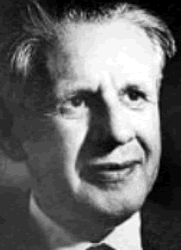
#vilna_born-8:
Lasar Segall
#vilna_born-9:
Romain Gary (May 8, 1914 – December 2, 1980) was a French novelist, film director, World War II aviator and diplomat.
Born Roman Kacew (Yiddish: ???, Russian: „K„p„ˆ„u„r), Romain Gary grew up in Vilnius to a family of Lithuanian Jews. He changed his name to Romain Gary when he escaped occupied France to fight with Great Britain against Germany in World War II. His father, Arieh-Leib Kacew, abandoned his family in 1925 and remarried. From this time Gary was raised by his mother, Nina Owczinski. When he was fourteen, he and his mother moved to Nice, France. In his books and interviews, he presented many different versions of his father's origin, parents, occupation and childhood.
He later studied law, first in Aix-en-Provence and then in Paris. He learned to pilot an aircraft in the French Air Force in Salon-de-Provence and in Avord Air Base, near Bourges. Following the Nazi occupation of France in World War II, he fled to England and under Charles de Gaulle served with the Free French Forces in Europe and North Africa. As a pilot, he took part in over 25 successful offensives logging over 65 hours of air time.
He was greatly decorated for his bravery in the war, receiving many medals and honours.
After the war, he worked in the French diplomatic service and in 1945 published his first novel. He would become one of France's most popular and prolific writers, authoring more than thirty novels, essays and memoirs, some of which he wrote under the pseudonym of Émile Ajar. He also wrote one novel under the pseudonym of Fosco Sinibaldi and another as Shatan Bogat.
In 1952, he became secretary of the French Delegation to the United Nations in New York, and later in London (in 1955).
In 1956, he became Consul General of France in Los Angeles.
He is the only person to win the Prix Goncourt twice. This prize for French language literature is awarded only once to an author. Gary, who had already received the prize in 1956 for Les racines du ciel, published La vie devant soi under the pseudonym of Émile Ajar in 1975. The Académie Goncourt awarded the prize to the author of this book without knowing his real identity. A period of literary intrigue followed. Gary's little cousin Paul Pavlowitch posed as the author for a time. Gary later revealed the truth in his posthumous book Vie et mort d'Émile Ajar.
1948 Bulgaria. Lesley Blanch and Romain Gary © Lesley Blanch Archive
Gary's first wife was the British writer, journalist, and Vogue editor Lesley Blanch (1904-2007, author of The Wilder Shores of Love ). They married in 1944 and divorced in 1961. From 1962 to 1970, Gary was married to the American actress Jean Seberg, with whom he had a son, Alexandre Diego Gary July 1963.
42-18216077 by clintonw202.
Seberg and Gary
He also co-wrote the screenplay for the motion picture, The Longest Day and co-wrote and directed the 1971 film Kill!, starring his now ex-wife Seberg.
Suffering from depression after Seberg's 1979 suicide, Gary died of a self-inflicted gunshot wound on December 2, 1980 in Paris, France though he left a note which said specifically that his death had no relation with Seberg's suicide. Also, he addressed in his note that Émile Ajar is himself.
[] Selected bibliography
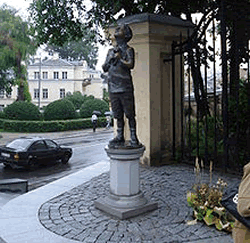
Romain Gary monument in Vilnius
[] As Romain Gary
* Education européenne (1945); translated as A European Education
* Tulipe (1946); republished and modified in 1970.
* Le grand vestiaire (1949); translated as "The Company Of Men, 1950)
* Les couleurs du jour (1952); translated as The Colors of the Day, 1953
* Les racines du ciel — 1956 Prix Goncourt; translated (and filmed) as The Roots of Heaven
* Lady L. (1957); translated and published in French in 1963.
* La promesse de l'aube (1960); translated as Promise at Dawn, 1961
* Johnie Coeur (1961, a theatre adaptation of "L'homme a la colombe")
* Gloire à nos illustres pionniers (1962, short stories); translated as "Hissing Tales" (1964)
* The Ski Bum (1965) (French transl. Adieu Gary Cooper, 1969)
* Pour Sganarelle (1965, literary essay)
* Les Mangeurs d'Etoiles (1966); translated and first published as The Talent Scout (1961)
* La danse de Gengis Cohn (1967); translated as The Dance of Genghis Cohn
* La tête coupable (1968); translated as The Guilty Head(1969)
* Chien blanc (1970); translated as White Dog, the basis for the 1982 film White Dog
* Les trésors de la Mer Rouge (1971)
* Europa(1972) translated in English in 1978.
* The Gasp (1973); translated as Charge d'ame(1978)
* Les enchanteurs (1973); translated as The Enchanters(1975)
* La nuit sera calme (1974, interview)
* Au-delà de cette limite votre ticket n'est plus valable (1975); translated as "Your Ticket Is No Longer Valid", 1977.
* Clair de femme (1977)
* La bonne moitié (1979, theatre)
* Les clowns lyriques (1979); new version of the 1952 novel, "Les couleurs du jour" (The Colors of the Day)
* Les cerfs-volants (1980)
* Vie et mort d'Émile Ajar (1981, posthumous)
* L'homme à la colombe (1984, definitive posthumous version)
* L'affaire homme (2005, articles and interviews)
* L'orage (2005, short stories and unfinished novels)
[]
* Gros câlin (1974)
* La vie devant soi — 1975 Prix Goncourt; translated as Momo and filmed as Madame Rosa, re-released as "The Life Before Us" (1986).
* Pseudo (1976)
* L'Angoisse du roi Salomon (1979); translated as "King Solomon" (1983).
* Gros câlin (2007)- new version including final chapter of the original and never published version.
[ As Fosco Sinibaldi
* L'homme à la colombe (1958)
[] As Shatan Bogat
* Les têtes de Stéphanie (1974)
[] Filmography
] As director
* Les oiseaux vont mourir au Pérou (Birds in Peru)(1968) starring Jean Seberg
* Kill! (1971)
[] As screenwriter
* The Roots of Heaven (1958)
* The Longest Day (1962)
[] References
* Myriam Anissimov, Romain Gary, le caméléon (Denoël 2004)
* Nancy Huston, Tombeau de Romain Gary(Babel, 1997)
* Cahier de l'Herne, Romain Gary (L'Herne, 2005)
